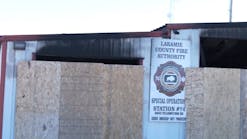'Spring Foward,' Kidde Says Time to Change Detector Batteries
It’s a sound nearly every homeowner has heard: the dreaded 2 a.m. chirp signifying a smoke or carbon monoxide (CO) alarm with a low battery. A survey conducted on behalf of Kidde Fire Safety, a leading manufacturer of residential fire safety products, ranked late-night low-battery chirps as homeowners’ top smoke alarm annoyance.
So why does it happen? Kidde, a part of UTC Building & Industrial Systems, a unit of United Technologies Corp. (NYSE: UTX), is setting the record straight — it’s a matter of the battery’s charge level and a home’s air temperature.
As a smoke alarm’s battery nears end of life, the amount of power it produces causes an internal resistance. A drop in room temperature increases this resistance, which may impact the battery’s ability to deliver the power necessary to operate the unit in an alarm situation.
This battery characteristic can cause a smoke alarm to enter the low battery chirp mode when air temperatures drop. Most homes are the coolest between 2 a.m. and 6 a.m. That’s why the alarm may sound a low-battery chirp in the middle of the night, and then quit when the home warms up a few degrees.
As Americans prepare to “spring forward” to daylight saving time this weekend, Kidde reminds you of these simple steps:
- Replace the batteries in all alarms and remember to test them monthly.
- Check the age of your smoke alarms. Fire experts recommend replacing all smoke alarms – battery and hardwired – every 10 years. If your alarms are older or if you don’t know their age, replace them.
- CO alarms don’t last forever, and will sound a required “end-of-life” chirp typically after five to seven years of power. Beat the beep by replacing outdated alarms.
- To eliminate future low battery chirps, install Kidde’s new Worry-Free combination alarm. It offers protection from both fire and CO in one unit with a clear voice that warns of each hazard. Unique intelligent sensing technology also helps reduce nuisance alarms. Like all Worry-Free models, it features a sealed-in lithium battery that powers the unit for 10 years.
“An American dies in a home fire nearly every three hours, which averages 3,000 deaths a year,” said Butch Browning, president, National Association of State Fire Marshals. “Most occur in homes with no smoke alarms or no working alarms, mainly due to dead or missing batteries. Working smoke alarms can provide an early alert and time needed to escape. Replacing outdated units with ones containing a sealed long-life battery eliminates this risk and could help save lives. Plus, in many cities and states it’s now the law.”
Currently, nine states and several municipalities require outdated, damaged or missing battery-powered alarms to be replaced with models containing a sealed, long-life battery. Ten-year sealed battery alarms are available at retailers nationwide and online and cost between $25 and $50. Consumers save up to $40 in battery costs over the life of one alarm. After 10 years, the alarm will indicate it is time for replacement. For more information, visit www.worryfreealarm.com.
About Kidde
Kidde is a leading manufacturer of residential smoke alarms, carbon monoxide (CO) alarms and fire extinguishers, and has been delivering advanced fire-safety technology since it produced the first integrated smoke detection and carbon dioxide extinguishing system nearly 100 years ago. Kidde is a part of UTC Building & Industrial Systems, a unit of United Technologies Corp., a leading provider to the aerospace and building systems industries worldwide.
For more information, visit www.kidde.com or follow @KiddeSafety on Twitter and @KiddeFireSafety on Instagram.






